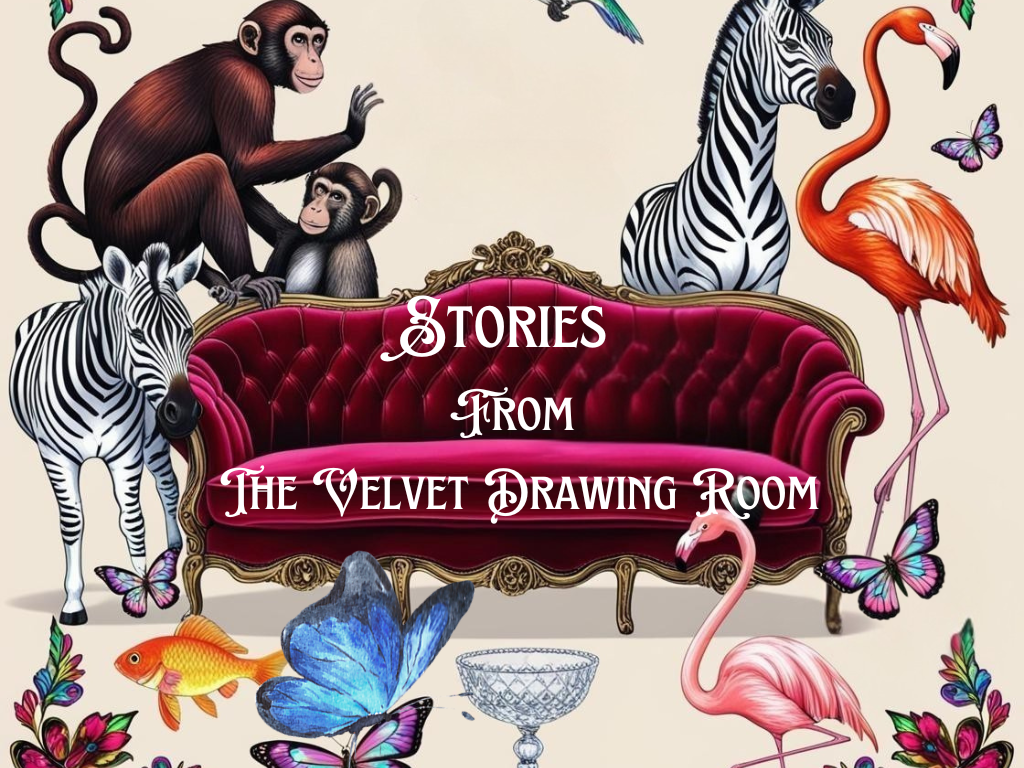THE VICTORIAN ERA 1837-1901
THE INDUSTRIAL REVOLUTION HERALDS THE VICTORIAN AGE

In the Victorian Era
Finding a place as an apprentice in a trade like Taxidermy in the Victorian Era or becoming a Taxidermist was the equivalent of holding a golden ticket, but to understand why, we have first to consider the social, economic and political background in the Victorian era.
The Industrial Revolution was the transition from creating goods by hand to using machines. Its start and end are widely debated by scholars, but the period generally spanned from about 1760 to 1840.
In 1837 Queen Victoria came to the throne. The Victorian era ended in 1901 upon her death.
By 1830 the Industrial Revolution had ensured that first world countries were powered by steam and built with iron. There were engines, bridges, trains and drains.
During this period factory owners became wealthier, while the working classes were stricken with poverty and sickness.
Life expectancy at birth for the average Victorian was about 42, and more than 25 per cent of children died before their fifth birthday. Disease was rife – there were four major outbreaks of cholera between 1832 and 1866. And although, in general, standards of living did improve over the period, a third of the population was still living in poverty at the end of the 19th century.
EDUCATION - THE TEST OF WEALTH AND CLASS
In the Victorian Era the test of wealth in Victorian Britain, and therefore class, of a child’s parents was whether that child was sent to school. If they were, then the family was middle class or above.
The trade of being a taxidermist, furrier or naturalist in the Victorian Era were most certainly “middle class” crafts. For a child to be an official scholar was a ticket to a golden future. In the mid to late 1800s families like those of leading taxidermists like Edward Gerrard or James Gardner could claim a heritage of good fortune.
During the Industrial Revolution of the Victorian Era all working class children were illiterate. Without education these children had no hope of finding a better job as they became adults, and they were condemned to a life of hard labour. Compulsory education would not arrive for children until the end of the 19th century.
With many children employed in factories and the most dangerous roles like matchstick making, chimney sweeping and coal mining, the lucky ones avoided a dreariest of existences if they were apprenticed to craftsmen, and while the work was better the hours were just as long and the pay was just as bad.
The Social Landscape of Working-Class Victorian Britain

Before the era of the Industrial Revolution when most people in Britain lived in the countryside 50 years was the average life expectancy. After the industrial revolution it reduced to 40 years.
In 1831 only 3% of people had lived in cities and the total UK population was just 13.9 million but due to huge industrial change by 1851 the population had grown to 17 million and then doubled in 1901 to 32.5 million. By that time the percentage of people living in towns and cities was now 77%.
Only 40% of those people born in the 1850s lived into their 60s and one in four who contracted TB would die of it.
The Factory Act of 1833 attempted to control some of the effects on the lives of ordinary people from the new work that came from the Industrial Revolution, particularly for children. The new law decreed that 2 hours of education at the factories was obligatory for children, but it largely went ignored.
The average wage in the 1850s was 15 shillings a week but children often only earned 5 shillings a week. Children were exploited because employers were looking for cheaper and cheaper ways to run their businesses and with no employment law in place, they could basically employ people as slaves.
In 1871 the Brickyard industry employed 20,000 – 30,000 children age between 5-16yrs. In 1878 there were 1,490 people killed in mining accidents. By 1901 84% of men were employed – the rest were “unoccupied or retired”
A law brought in in 1874 restricted the maximum working hours to 56 but workers were still shamelessly exploited. Shifts were often 14 hours a day and people worked for a pittance. If workers made a fuss and complained, they were sacked or blacklisted.
A married couple couldn’t afford to have just one or two children – many had as many as ten in order that those children could be used to send out to work and to provide money for the family. There was no contraception, of course, so whether they needed or wanted a lot of children is a moot point. In many cases a woman would give birth to a child and return to work the next day, leaving the newborn to be cared for by an older relative.
WORKING CLASS HOMES
The Industrial Revolution had dragged a huge influx of people from the countryside to the towns and cities. They demanded affordable housing which was in scarce supply. Sanitation was next to absent and living conditions for the masses were awful.
Quickly built, poor quality back-to-back houses in terraced rows appeared almost overnight. Small, terraced homes housed on average ten people; there was very poor drainage and damp was everywhere. The worst place to live was in the basement, but many did; unmanaged sewage from the upper floors inevitably seeped downwards and basements were often flooded with human waste.
These back-to-back houses sometimes shared outside toilets and usually sixty people from the terraced row shared just one toilet.
Beds in attics were often rented out to single workers but sometimes more than one family crammed themselves into these cheap-to-rent attics where at least two or three children would share a single bed, and girls and boys as young as three or four would be sent out to work.
There would be one room in the entire house that served as a kitchen, living and dining room and multiple families and workers would share the space, usually eating bread and gruel. There was no drinking water; rainwater was collected from a bucket left outside. The walls were thin, and everyone was a witness to any conversation or human activity. There was no privacy.
Life was grim. Most working-class people had to fight for their survival in the slums. Disease and desperation were everywhere.
The Workhouse
Was feared above all by the working class citizens of Britain in the mid 1800s
Working conditions in Victorian Britain were truly terrible, but there was one place that was worse – the mid-century Workhouse – and it was feared above all else by the working classes of Britain; it was where the poorest and oldest went and it was a terrifying prospect.
Families were split up and they were punished if they attempted to communicate with each other. There was no space or privacy, and each dormitory was overflowing with dozens of people. The government of the day had deliberately made the conditions this way, seemingly to discourage “idleness” !
As Charles Dickens famously said in A Tale Of Two Cities – “it was the best of times; it was the worst of times” and this was true. For Britain’s workers it was terrible, but a global Britain was triumphant. The British Empire extended across a quarter of the globe, with the most developed industry and the finest of societies.
The working class helped to shape the Empire, but the working class were repaid with a life of certain servitude.

DISEASE AND SOCIAL CONVENTIONS
From 1832 to 1866 when London’s basic sewage system was introduced a major Cholera outbreak killed thousands. In just one week in 1848 over two thousand people died from Cholera, which starts with dirty drinking water and sewage contamination. Anyone who caught Cholera died within hours. 400,000 litres of stinking sewage was being released into the Thames every day, so it’s hardly surprising that water was the source of Cholera.
Between 1837 – 1841 Deadly Typhus was raging at an approximate rate of 16,000 new cases every year. The sharing of water in overcrowded areas meant that just one person with a case of Typhus could infect the whole area.
In 1864, one in three Servicemen who was tested under the Contagious Diseases Act was found to be suffering from Syphilis, for which there was no cure.
THE FEAR OF BEING LABELLED A PROSTITUTE
Any woman suspected of being a Prostitute and therefore considered to be spreading the disease, could be locked up, detained, and forcibly examined by a male doctor. It’s possible that unwed mothers could be included in the group of women labelled as prostitutes, and some numbers put the estimate of prostitute numbers in London at 80,000.
If a woman did have Syphilis, she was sent to a Lock Hospital to be cured. Of course, there was no cure, and so being found still to be diseased, the woman could be sent to prison instead or even to an asylum.
It was simply a case of “suspicion” of being a prostitute that would condemn a woman. There was no evidence necessary.
In the case of Virginia Ellen Ball and James Gardner, Taxidermist, in 1868 I have no doubt at all that these social conventions and fear of accusations were the reason that they left behind their newborn child with Mary Gardner, James’ wife.
Who knows, Mary herself, after being betrayed by James, may have threatened to make an accusation against Virginia and condemn them both, thereby ensuring that she punished her husband and his lover by keeping their child? As deeply wicked and shocking as it is, it is very likely.
The Contagious Diseases Act was finally repealed in 1886 and by this time Joseph James Gardner, the illegitimate child of James Gardner and Virginia Ellen Ball was 18 years old. Finally, his mother was free from threat, but she had lost her child as a result. It’s deeply sad to consider how they were all affected.
You only have to take a stroll through the pages of the novels by Charles Dickens to bring this era to life in your consciousness.

Painting: The Outcast by Richard Redgrave
Discover more from thevelvetdrawingroom.co.uk
Subscribe to get the latest posts sent to your email.




















